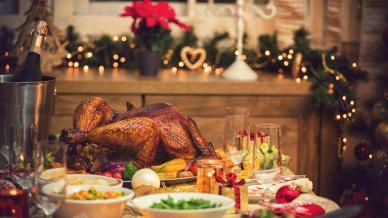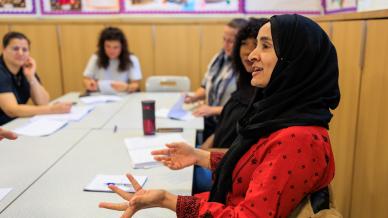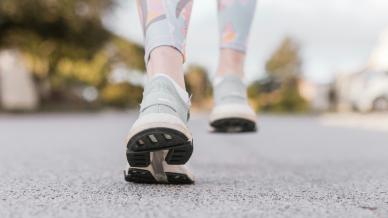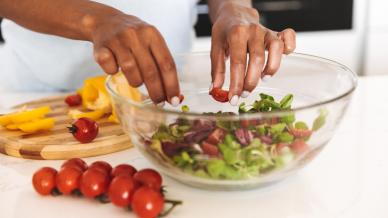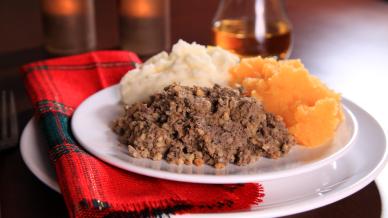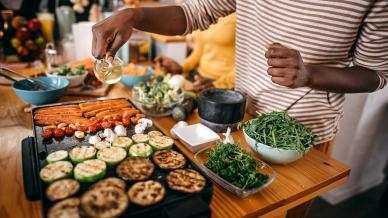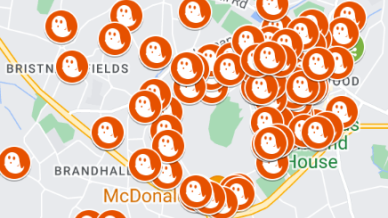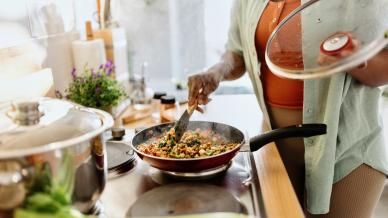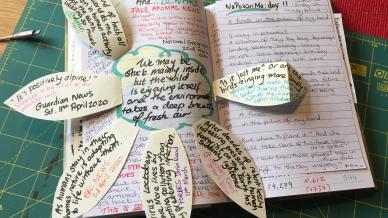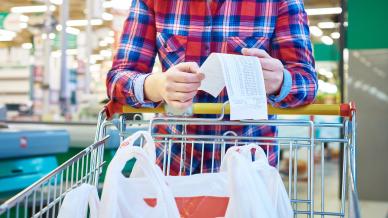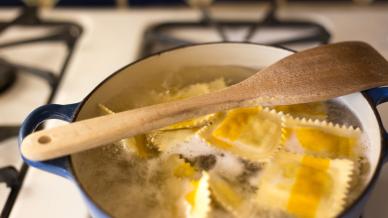If you are looking to make your Christmas more sustainable, it's better to start small. After all, it won't all happen in an instant. However, starting with the smaller things will add to the collective effort to becoming sustainable. A great place to start is with the core principle of Reduce, Reuse, Recycle, which you can use when cooking and thinking about food miles.
What are Food Miles?
Food that is not from the UK which we eat at Christmas, such as dates, figs, satsumas, to name a few, travel great distances. The shipping of the food is expensive, and the environmental impact is costly. Workforce, transport costs financially, and fossil fuel consumption and carbon emissions environmentally, all add to the mix. The distance a food product travels is known as food miles. Knowing this can help us assess the full cost (financially and environmentally ) of our food choices.
Choosing foods with fewer food miles helps reduce pollution and ease the strain on the climate. The best way to do this is to use locally grown produce and seasonal farmers markets. Sometimes these can be expensive, especially when they are organic or a certain speciality, so be sure to check and shop around if needs be when purchasing your groceries. The next best thing is to check the labels of the food and make sure that any imported food you use have fewer food miles. For example, figs from Southern Spain have travelled fewer food miles than those from further into the Mediterranean. Alternatively, figs are not seasonal in the UK at Christmas, so do you really want them? The same can be said for other food stuffs.
Buy in-season produce
It is worth noting that most of the vegetables that we use for our cherished Christmas dinner and other meals during the period, such as sprouts, carrots, parsnips, and potatoes, are in season at this time of the year. If you can afford local, seasonal, organic food then you will be supporting the nature-friendly farmers in the UK. If you cannot, take food miles into account. At least buying seasonal food at this time of year reduces the power used to supply out of season produce. Out of season produce is likely to have been grown using artificial lighting and heating which uses more energy consumption and artificial nutrients.
What about the food wasted at Christmas?
If you are not able to buy locally and you are not considering food miles, imagine the amount of time, money, fuel, and power wasted when you throw away food at Christmas. The UK Soil Association reported in 2022 that some two million turkeys, five million puddings and 74 million mince pies were discarded over the Christmas period. These are astonishing figures, but this is only part of the one third of all food produced that is wasted yearly.
Food waste needs to be reduced if we are to keep food supplies to a growing UK population and reducing greenhouse gas emission to reach net zero. To support the reduction of food waste and save you money during the excesses of Christmas, you can make the most of leftovers by visiting vast number of websites which supply a choice of zero waste recipes for festive leftovers. You may consider the magic of leftovers and their transformation into other meals throughout the year!
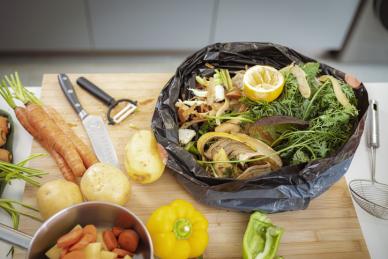
What else can you do?
Food Sustainability
A survey by Schwartz identified that the UK wastes nearly 200,000 tonnes of food at Christmas - equivalent to 6.6 million bins full of wasted food. The findings highlight that 63% of those who throw away uneaten food say doing so makes them feel bad. One reason for this is that most of us are spending more on Christmas food to deliver too much rather than not having enough food when hosting family and friends.
As well as looking at your food miles you can also change the food you eat over the Festive period. This has the potential to have influence on the environment, your health, and your wellbeing. The main suggestion is to eat seasonal food. However, you may consider reducing your meat consumption over Christmas and eat two meals a week without it. Think of the money you could save and the better you would feel eating less meat.
For those who wish to go environmentally hardcore over the festive period, you can consider not having a traditional turkey with all the trimmings. As a result, this could reduce your carbon footprint by 39.1kg of grams of CO2 equivalent (CO2e/kg). If you are keeping traditional, the most environmentally friendly foods are the vegetables producing just 2kg of CO2e/kg. Bulking your dinner with vegetables can help lower your carbon footprint. You may wish to consider a plant-based roast which can reduce your impact even more. Nuts produce 2.3kg CO2e/kg and lentils produce 0.9kg of CO2e/kg. An egg to bind produces around 0.25kg of CO2e/kg. As a result, a homemade nut roast can reduce your dinner to just over 0.35kg of CO2e for each serving.
If you are really interested in a lower carbon traditional Christmas dinner, replace pork stuffing with a sage and onion version and use vegetable stock to flavour your gravy instead of meat juices. With the magic of leftover vegetables, you can produce your own delicious low-waste stock. Instead of using dripping or olive oil, consider using a UK made vegetable, sunflower, or rapeseed oil.
Another thing to think about is do you really need a whole turkey? Perhaps if you are a small family, you could reduce the size of your portions which leads on to minimal leftovers. You may wish to consider reducing the number of dishes made for the meal. You also save power as the smaller roasts cook faster which in turn lowers your carbon footprint.
Sustainability through food safety at Christmas
As a lot of food is prepared and eaten during the festive period, the following are tips to prevent food spoilage and waste alongside reducing the risk of food poisoning:
- Fridge Temperatures . Always ensure that your fridge is set at 5°C and your freezer at -18°C. You should check the use by date of foods and store the food according to the instructions on the label. This will help food stay fresher for longer. Raw meats and ready-to-eat food, such as fresh fruit and cooked meat, should be stored separately to avoid cross-contamination. If you must leave food open, make sure that there is nothing stored above it that can drip down onto the produce.
- Understand the dates on the food labels. Be aware of the dates on the food labels and make sure that you understand what they mean. They are there for food safety and to prevent food spoilage. The dates mean you can avoid throwing away decent food unnecessarily. Best before is about food quality. The food will be safe to eat after this date but may no longer be at its best so you may have a difference in taste. Use by dates are about safety. Food should not be eaten, cooked or frozen after this date, as it could be unsafe due to a build-up of food poisoning organisms. Even if the food looks fine, if the use by date has passed do not eat it or use it in other recipes.
- Reheating food – the basics. Food needs to be eaten within 24 hours after defrosting. Food that you have cooked beforehand, and any frozen meat should only be reheated once only. Defrosted meat can be safely cooked into a new meal if you are planning to freeze that dish for another day. The classic example of this is that you can buy your turkey frozen, defrost it, cook it, and use the leftovers in a curry or pie, which itself can be frozen to eat and enjoy another day.
- Festive food freezing. Using the dates on the food labels you will be able to reduce the overwhelming amount of food wasted during the festive period. A lot of this food is thrown away as it is close to its use by date. It can be frozen, so long as the used by date it not exceeded.
- The magic of leftovers. The theme through this advice for food sustainability is use your leftovers and reduce waste. Start cooling what you don’t need quickly – ideally, you’ll get your leftovers into the fridge within 90 minutes. If you are considering eating them over a longer period, then they should be eaten within 2 days if refrigerating them. If you are keeping the food longer it should then be frozen. Make sure it is thoroughly defrosted before heating, by leaving it in the fridge or using a microwave.
Most of the things discussed in this article except the food safety aspect are “food for thought”. It would be a great idea to give some thought of where your food has come from at Christmas and how its food miles, preparation, consumption, and removal effect the environment. However, it is most important that you enjoy yourself with friends and family during your festivities and keep the environmental impact of this time of year in mind. Doing a little bit here and there will help sustainability and keeping future Christmastimes with your friends and family.
